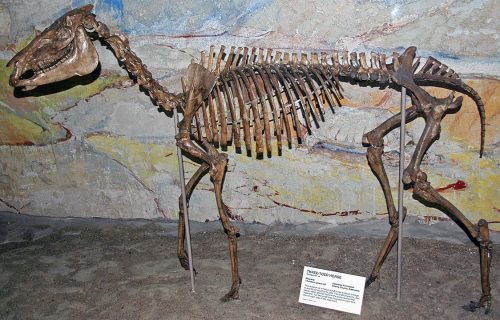Neohipparion was the most successful hipparion horse in terms of number of species in the fossil record. Hipparion horses have been found in North America, Europe, and Asia.
 Where & When?
Where & When?
Neohipparion fossils are found in sediments dating from the mid-Miocene through early Pliocene of North and Central America. Species in this genus lived from 16-5 million years ago.
What’s so new about Neohipparion?
Neohipparion seems to have been strictly a New World genus, hence the “neo-” of its name.

The hipparions were a group of three-toed horses found throughout much of the world during the Miocene and Pliocene.
They are distinguished from contemporary non-hipparion horses by the condition of the protocone, a structure in the upper cheek teeth. In hipparions, the protocone and protoloph typically are not connected, whereas in other horses of the late Miocene and Pliocene, they are connected.
Hipparions are the most common large mammal in many 10-million-year-old fossil sites. In spite of their success, hipparions were a side branch in horse evolution, with no modern survivors. By 6 million years ago, only a few species remained. The last hipparion species, Cormohipparion emsliei, hung on in Florida until about 2 million years ago.